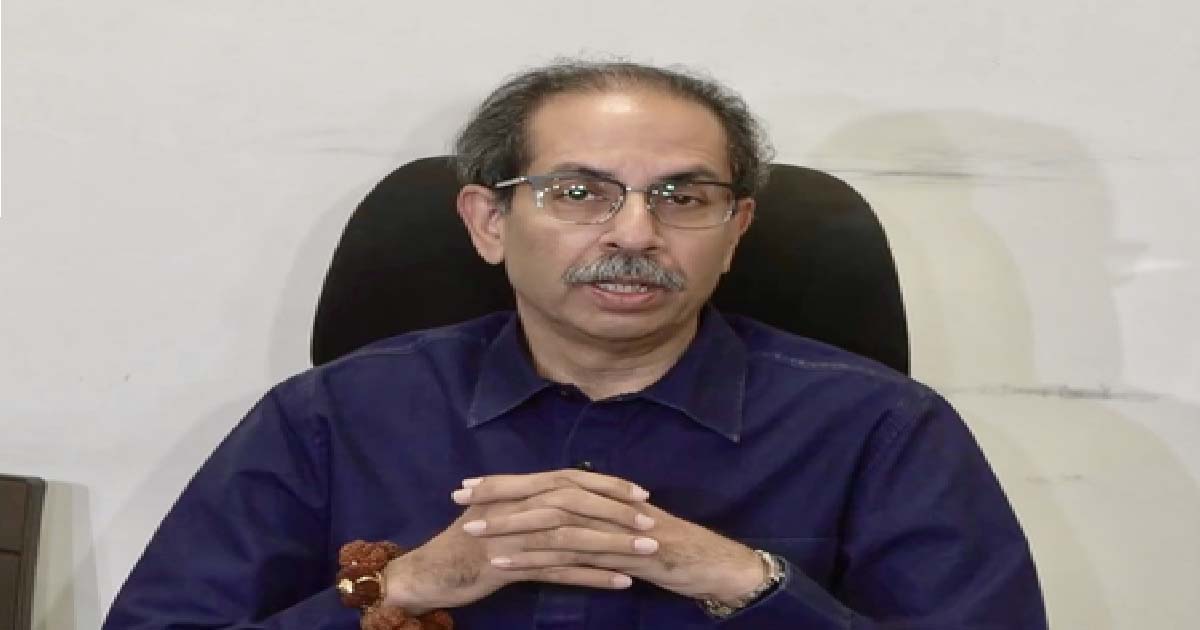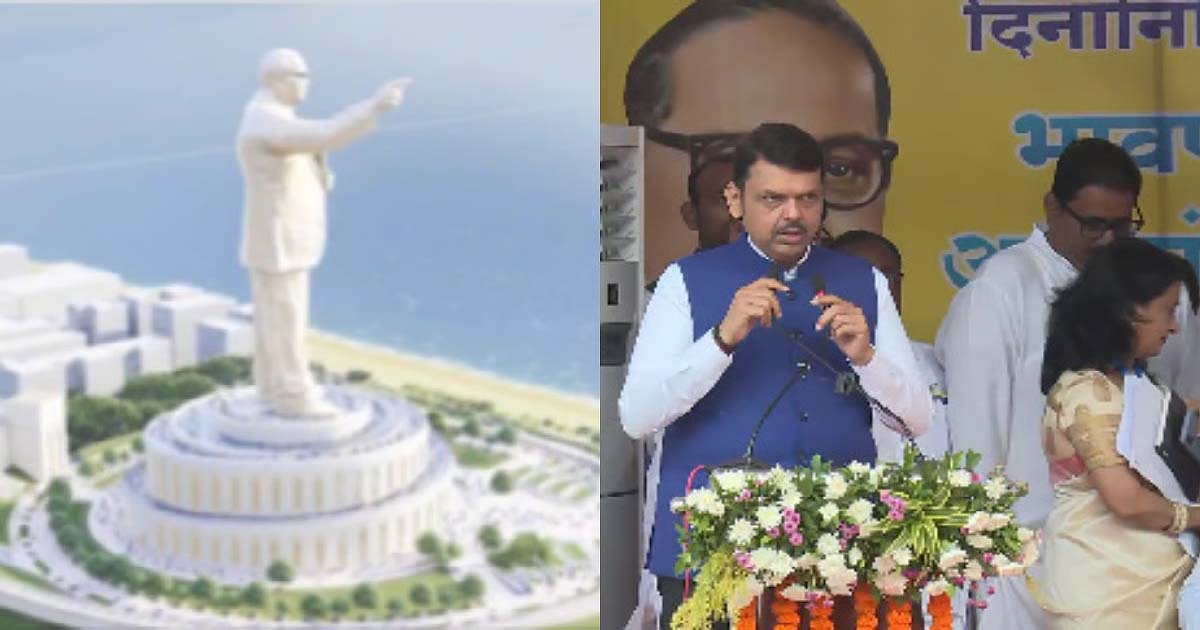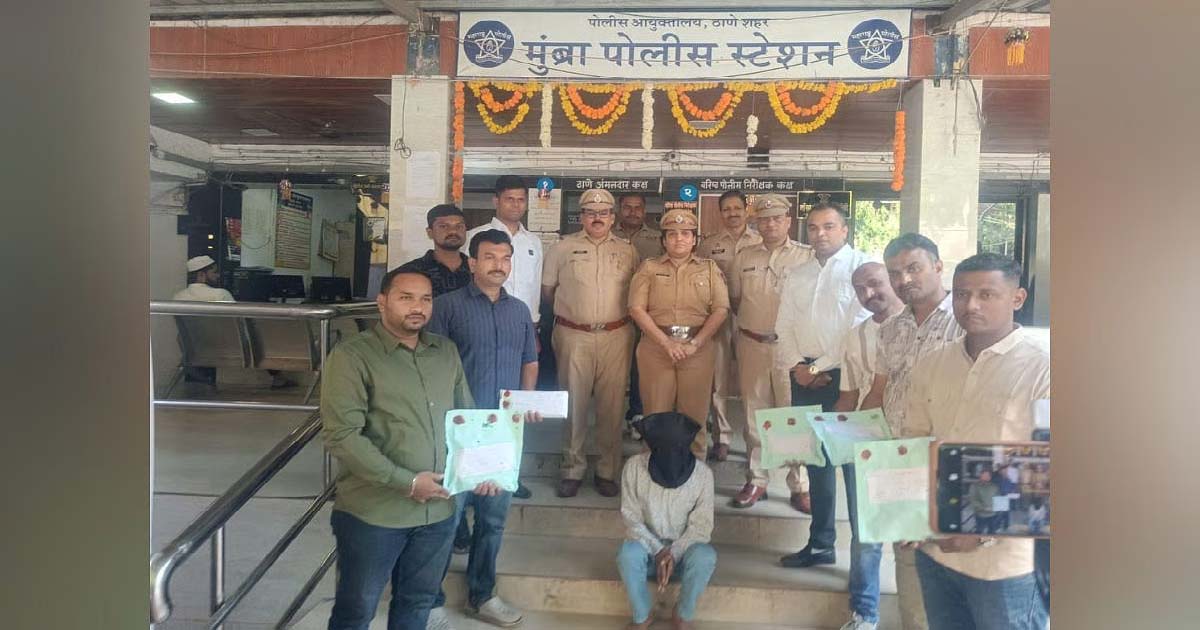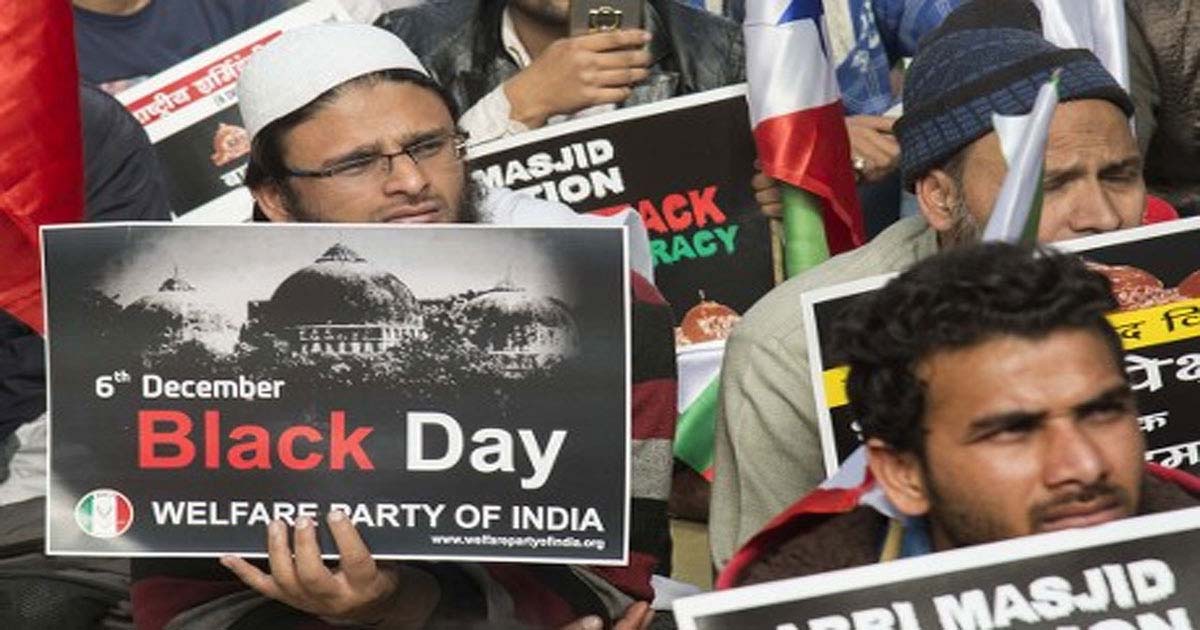National News
Shiv Sena(UBT) questions govt on India-Pak ceasefire, raises finger at Trump’s role

Mumbai, May 12: The Shiv Sena(UBT) has strongly expressed displeasure over the US President Donald Trump’s ‘intervention’ in the India-Pakistan conflict and his announcement of a ceasefire.
In a scathing editorial in its mouthpiece ‘Saamana’, the Shiv Sena(UBT) asked, “Who gave the President authority? Did President Trump buy India’s sovereignty? In exchange for what? Exactly, “What deal was made? The country must know.”
“The Indian Army and Air Force have foiled the drones and missiles launched by Pakistan against India. They have given a befitting reply to the Pakistanis, but while doing all this, the exact whereabouts of the six terrorists who carried out the Pahalgam attack have not been traced. The trigger for the India-Pak conflict was the killing of 26 innocent people by six terrorists. But President Trump has poured water. President Trump wants peace to prevail between India and Pakistan. He is not Mahatma Gandhi, Martin Luther King, or Nelson Mandela. He is a businessman. The ruling businessmen of India have joined hands with the businessmen of America. President Trump has not stopped the Israel-Palestine war. By directly supporting Israel, he watches the deaths of the people of Gaza and preaches peace to India,” said the editorial.
“India is a sovereign and independent nation. No outside country has the right to interfere in our nation, but US President Trump has intervened in the India-Pakistan conflict, and India has accepted Trump’s ceasefire proposal. Trump announced on his ‘X’ account that India has accepted the ceasefire. Till then, the people of India and the Indian Army were not aware of this ceasefire. Who gave President Trump this authority?” asked the Shiv Sena(UBT) in the editorial.
“According to the Simla Agreement signed between the two nations after the 1971 Indo-Pak war, a third nation was not allowed to intervene in the conflict between the two nations. However, now the Prime Minister of India has violated the Simla Agreement. India succumbed to Trump’s pressure and ratified the ceasefire, but was ‘Operation Sindoor’ or Pakistan’s revenge completed? The country has not received an answer to this,” said the editorial.
“Twelve innocent civilians were killed in the Pakistani attack in Poonch-Rajouri. What was their mistake? Prime Minister Modi was so eager that amid the conflict between India and Pakistan, there was no turning back. Just as Modi’s eagerness was generating new energy in the country and the army, President Trump struck a deal. Seven Indian soldiers died in the Pakistani attack. One of them is Murali Naik from Mumbai, and this young martyr is only 23 years old. Murali Naik and Dinesh Sharma died while responding to Pakistani firing in the Uri sector. Dinesh Sharma is also a young soldier. He fought with Pakistan in the Poonch sector. He showed unparalleled bravery for the country and made the supreme sacrifice of his life to protect Mother India. Thousands of such Dinesh Sharmas and Murali Naiks are fighting on the Indian border and are taking bullets in their chests. Murali Naik’s parents live in a slum in Ghatkopar. They work hard to run their household. The only son of Mother India, he was martyred while fighting on the country’s border to protect it. Murali’s father said, “I am proud that my son has come to serve the country,” but in the end, he will be sad that his stomach has been emptied. Those who have been swept up in the political frenzy of war should remember this,” said the editorial.
“Those who have been charged up due to the political frenzy of war have never sacrificed for the country, nor have they shown any bravery, but the propaganda is going on as if this war is being fought by the Bharatiya Janata Party and its own people. The government has closed down news agencies and a few channels. Even after the ceasefire game has started, the Defence Minister is raking up Operation Sindoor. However, the basic questions still remain that is, how did those six terrorists come and how did they disappear? Why was their whereabouts not known? These questions will be asked. Seven terrorists of the terrorist organisation. Jaish-e-Mohammed, who tried to infiltrate into India from the Samba sector in Jammu on Thursday midnight, were killed by the brave jawans of the Border Security Force. These same soldiers destroyed the outpost on the Pakistani border. This is commendable and every Indian citizen should know,” said the editorial.
“Pakistan is standing firm, and the Pakistani Prime Minister has rubbed salt in the wounds of 26 sisters who were left destitute in the Pahalgam attack by claiming that ‘we won the war’. While all this is happening, the Prime Minister, Defence Minister, and Home Minister are nowhere to be seen. Before the war started, Home Minister Amit Shah had said in Parliament that Pakistan-occupied Kashmir is a part of India. We will even give our lives for it, but when the Indian Army moved forward to take Kashmir, Modi-Shah simply accepted the ceasefire and surrendered to President Trump. Have the sacrifices of seven soldiers in the conflict with Pakistan gone in vain?” asked the Shiv Sena (UBT).
“One should be proud of the action. If the infiltration of seven Jaish terrorists on the Indian border is stopped and they are killed, then how were the terrorists who entered the tourist spot of Pahalgam and attacked indiscriminately allowed to enter? How were they left free? How were they allowed to wipe the vermilion of 26 sisters, and what happened to them after doing this? These questions arise,” said the editorial.
National News
Mahaparinirvan Diwas 2025: Dr Ambedkar’s Mumbai Memorial To Near Completion By Dec 2026 | All You Need To Know

Mumbai: Maharashtra Chief Minister Devendra Fadnavis on Saturday, December 6, said all efforts will be taken to ensure completion of the grand memorial of Babasaheb Ambedkar at Indu Mill in Mumbai’s Dadar area by next year. While speaking at a function at Dadar’s ‘Chaityabhoomi’ to mark the 69th Mahaparinirvan Day (death anniversary), the CM said, “Construction work is on, and all efforts will be taken to complete it by December 6 next year.”
– The under-construction 450-foot memorial of Bharat Ratna Dr Babasaheb Ambedkar, taking shape very close to the sacred ground of Chaityabhoomi, features a 350-foot-tall statue and a 100-foot-high pedestal.
– A steel and bronze statue, standing 350 feet tall, is being prepared in Ghaziabad by the firm of renowned sculptor Ram Sutar, a Maharashtra Bhushan and Padma Bhushan awardee.
– More than 1,478 tonnes of steel and 107 tonnes of bronze have already been procured; intricate bronze panels covering 661 square metres are complete.
– The 4-hectare memorial also features a 1,000-seater auditorium, a research centre with seminar halls, a library, a meditation area, a promenade, a Parikrama Path, two-story parking area.
– In an update by MMRDA, it stated that over 54 per cent of the work on the monument is complete.
– The Maharashtra govt had in 2013 appointed the Mumbai Metropolitan Region Development Authority as the Special Planning Authority (SPA) for the development of the memorial on a 4.84-hectare plot. Its ‘bhoomi pujan’ was held on October 11, 2015, at the hands of Prime Minister Narendra Modi.
– The site is close to ‘Chaityabhoomi’, where lakhs of followers converge every year on December 6 to mark the death anniversary of Ambedkar. He died on this day in 1956.
NCP (SP) working president Supriya Sule has questioned the delay in the construction of the memorial complex. While speaking to reporters
Speaking to reporters after paying tribute at ‘Chaityabhoomi’ on the 69th Mahaparinirvan Diwas of Babasaheb Ambedkar, she said, “Even after land was given for the grand memorial, why is it taking so long to complete it? Big road and infrastructure projects of the state are being completed, but this memorial is a place of faith for all of us. Why is it still not complete? The state government must answer.”
Crime
Thane NDPS Wing Busts Drug Racket; Over 2.2 Kg Hashish Worth ₹1.10 Crore Seized In Mumbra, 1 Accused Arrested

Thane, Dec 06: Thane City’s NDPS branch has achieved a major success. Under an on-ground operation, the police have exposed an active gang selling narcotic substances. In this action, the police have recovered approximately 02 kg 201 grams of hashish (charas), the market value of which is estimated to be one crore ten lakh sixty-five thousand rupees.
This operation was led by Senior Police Inspector Nitin Shinde. His team included officers and personnel from the crime branch, who carried out this action based on secret information.
Police had received information that some individuals were selling hashish and other intoxicating substances in the Mumbra area. Following this, the team laid a trap, cordoned off, and caught the suspect in the Bandewadi area. A large quantity of hashish was recovered from his possession upon search.
The suspected accused has been identified as Moin Khan, alias Hasrat Ali Siddiqui. Preliminary interrogation revealed that he used to illegally procure hashish from Jammu and Kashmir and sell it in Thane, Mumbai, and surrounding areas. The accused already has several serious crimes registered against him.
In this regard, Mumbra Police has registered a case under NDPS Act 20(a)(i)(b), 29, and further investigation is underway. The police are also trying to find out who else is involved in this network and how far this hashish supply chain extends.
Mumbai Press Exclusive News
On the 33rd anniversary of the Babri Masjid demolition, Mumbai’s streets reverberated with chants of “Allahu Akbar.”Peaceful protests and prayers for recovery were offered, with police on alert.

On the 33rd anniversary of the Babri Masjid demolition in Mumbai, mosques, streets, and intersections in the city and suburbs echoed with the call to prayer of Allahu Akbar, Allahu Akbar, when the miscreants had demolished the Babri Masjid at 3:45 pm. Muslims believe that the Babri Masjid is a mosque from the throne to the floor and will remain a mosque until the Day of Judgment. Therefore, Muslims observed a black day of protest on December 6. Prayers were also offered for the recovery of the Babri Masjid on this occasion. Raza Academy had announced to observe a black day on the martyrdom of the Babri Masjid and to give collective azans in mosques. On this occasion, Raza Academy organized azan at the intersections of Muslim-majority areas, especially Minaret Masjid and other mosques. On this occasion, the police had made strict security arrangements. Muslim organizations also observed a black day by giving azan and protesting on the martyrdom of the Babri Masjid. Muslims also remembered the grief of the martyrdom of the Babri Masjid by posting statuses related to the Babri Masjid on social media and every Muslim looked sad.
33rd anniversary of the Babri Masjid demolition; Azans were given in the city on the appeal of Raza Academy. On the occasion of the 33rd anniversary of the Babri Masjid demolition, Raza Academy gave azan in different areas of the city at 3:45 pm. The aim of this initiative is to keep the memory of this historical event fresh and pay tribute to the martyrs of Babri Masjid. Raza Academy gave azan in particular at Khatri Masjid, Bunyan Road, Minare Masjid, Muhammad Ali Road Corner, Bhandi Bazaar, Neer Mandvi Post Office. On this occasion, scholars prayed for the recovery of Babri Masjid and made it clear that Babri Masjid was taken by fraud. Babri Masjid will remain a mosque until the Day of Judgment. The miscreants have tarnished the constitution of the country by demolishing this mosque, which will always remain a fresh wound like injustice. Raza Academy head Saeed Noori said that Black Day is observed on the martyrdom of Babri Masjid. On this day, Raza Academy organizes Azan and peaceful protests are held against this injustice. He said that miscreants targeted the mosque and martyred it while it was protected, but even today its perpetrators are free. The Supreme Court has also accepted that Babri Masjid was not built by demolishing a temple, while miscreants have put a stigma of oppression and injustice on the chest of the country. Every year on the anniversary of Babri Masjid, Raza Academy refreshes its memory by giving Azan. There is a sorrow that will always remain. Mumbai Police had made strict security arrangements on the anniversary of Babri Masjid and an alert was issued in the city.
-

 Crime3 years ago
Crime3 years agoClass 10 student jumps to death in Jaipur
-

 Maharashtra1 year ago
Maharashtra1 year agoMumbai Local Train Update: Central Railway’s New Timetable Comes Into Effect; Check Full List Of Revised Timings & Stations
-

 Maharashtra1 year ago
Maharashtra1 year agoMumbai To Go Toll-Free Tonight! Maharashtra Govt Announces Complete Toll Waiver For Light Motor Vehicles At All 5 Entry Points Of City
-

 Maharashtra1 year ago
Maharashtra1 year agoFalse photo of Imtiaz Jaleel’s rally, exposing the fooling conspiracy
-

 National News1 year ago
National News1 year agoMinistry of Railways rolls out Special Drive 4.0 with focus on digitisation, cleanliness, inclusiveness and grievance redressal
-

 Maharashtra1 year ago
Maharashtra1 year agoMaharashtra Elections 2024: Mumbai Metro & BEST Services Extended Till Midnight On Voting Day
-

 National News1 year ago
National News1 year agoJ&K: 4 Jawans Killed, 28 Injured After Bus Carrying BSF Personnel For Poll Duty Falls Into Gorge In Budgam; Terrifying Visuals Surface
-

 Crime1 year ago
Crime1 year agoBaba Siddique Murder: Mumbai Police Unable To Get Lawrence Bishnoi Custody Due To Home Ministry Order, Says Report












